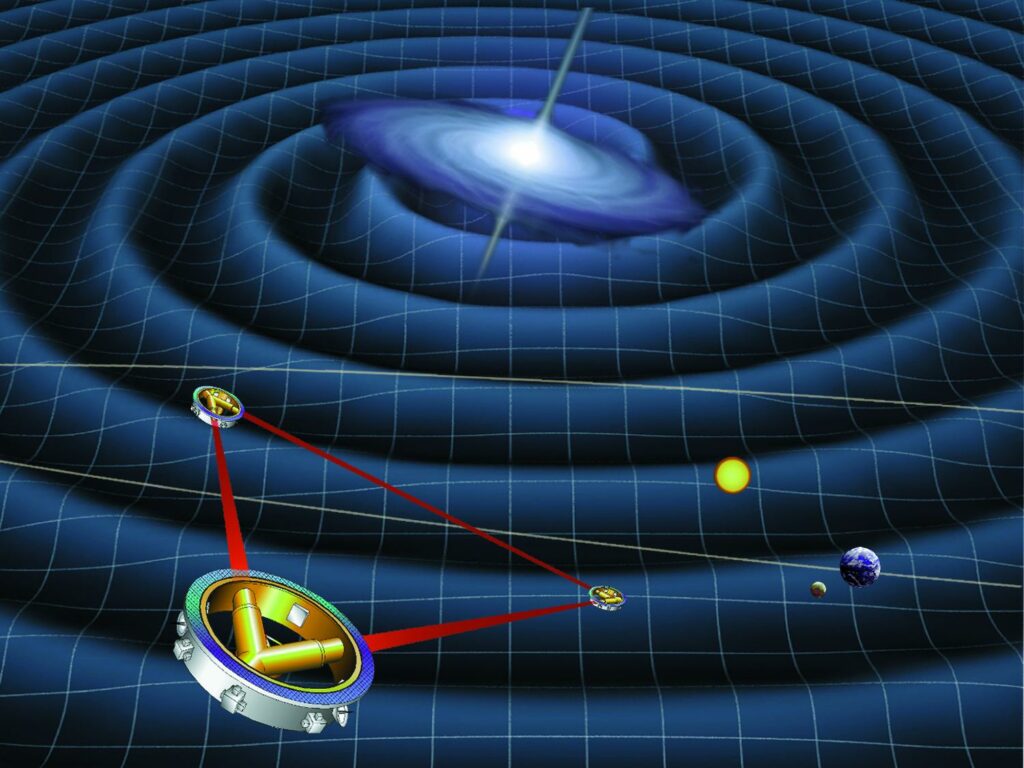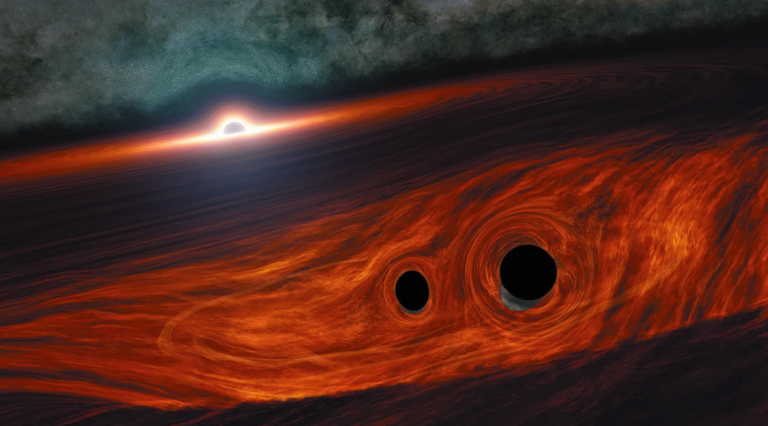The merger of two black holes staggering speed of 3 million miles per hour resulted in the formation of a significantly larger black hole.
Astronomers have presented compelling evidence indicating that the collision of black holes can lead to a powerful “kick,” pushing one of them out of its galaxy.
The study, spearheaded by physicist Vijay Varma from the Max Planck Institute for Gravitational Physics, Albert Einstein Institute in Germany, examined data from gravitational-wave detection, specifically the GW200129 event detected by the LIGO detectors in conjunction with their European counterpart, Virgo. After thorough analysis, the scientists discovered that the resulting black hole from this collision was propelled through space at an incredible speed of 3 million mph (4.8 million kph) – a finding described by one team member as “surprising and remarkable.”
“When two black holes merge, they create a larger black hole. This process can generate a recoil ‘kick’ to the resulting black hole,” explained Varma, the main author of the research detailing the team’s discoveries, in an interview with Space.com. The emission of gravitational waves, similar to gravitational radiation, occurs as black holes revolve around each other. These waves carry off energy and angular momentum, leading to the reduction of the orbit until a collision and merger between the black holes take place.
Nevertheless, if the black holes have different masses or spins, an imbalance in gravitational wave emission occurs, mainly in one direction. Following the law of conservation of momentum, this imbalance results in a significant kick, propelling the resulting black hole in the opposite direction.
“Similar to astrophysical processes that emit electromagnetic radiation, black hole mergers also emit gravitational radiation,” Varma added.
The significant kicks are expected when the orbital plane of the merger experiences precession or “wobbling.” This precession can be observed as a slight modification in the gravitational-wave signal. “This binary black hole system is the initial indication of significant signs of orbital precession, where the orbital plane wobbles,” noted co-author Scott Field, a mathematician from the University of Massachusetts Dartmouth, to Space.com.
Varma emphasized that through the analysis of gravitational radiation, astronomers and astrophysicists can acquire insights into black hole mergers. Furthermore, as black holes play a vital role in galaxy evolution, understanding these processes could clarify the formation of star clusters like the Milky Way.
This represents the first case where astronomers have gathered compelling evidence showing that such a merger can eject the resulting black hole from its galaxy.
“Unlike previous observations of black hole mergers, this is the initial instance providing substantial proof of a massive recoil velocity. Remarkably significant, indeed, for the resulting black hole to potentially escape its host environment,” Field commented. “While we understood in theory that general relativity allowed for such extreme possibilities, it was uncertain whether the universe would exhibit them. The final black hole’s velocity is expected to exceed the escape velocity of its host environment.”
Field further mentioned that this discovery will have a significant impact on scenarios of binary black hole formation. This is because supermassive black holes, like Sagittarius A* (Sgr A*) at the Milky Way’s core, are formed through a series of collisions known as hierarchical mergers. Black holes expelled from galaxies cannot participate in this process.
Mergers that give black holes the boot
Advancements in technology have made it possible to detect mergers that can propel black holes with significant force. This has been made feasible through more precise gravitational wave detections.
According to Field, the observation and study of black hole mergers solely rely on gravitational waves as they do not emit any light. Without gravitational wave observatories, we would have remained unaware of these expelled black holes.
The origin of the gravitational wave event GW200129 cannot be precisely determined by scientists. As a result, the team is unable to definitively confirm whether the black hole was expelled from its galaxy. However, based on its extreme velocity, researchers speculate that this is the most likely outcome.
Varma stated that if this is indeed the case, the black hole is now drifting independently through the universe as a rogue black hole.

Varma pointed out that the merger being observed could potentially be a smaller version of a more significant event. “A similar scenario occurs during the merging of supermassive black holes, a process that can take place after a galactic merger,” Varma elaborated. “The resulting supermassive black hole might move away from the center of the merged galaxy or even be expelled from it, resulting in a galaxy without a central black hole.”
Although current gravitational-wave detectors do not have the capacity to detect mergers involving supermassive black holes, the researchers proposed that future space-based detectors like the planned Laser Interferometer Space Antenna (LISA) mission could enable such observations.
“Gravitational-wave astronomy has led to numerous impactful and truly remarkable discoveries in the last five years,” Field stated. “Prior to the initial detection of gravitational waves, the prevailing belief in our field was that gravitational waves would offer a new perspective on the universe. With each subsequent observation by LIGO, this belief has been confirmed.”
The research findings have been outlined in a paper released on May 12 in the journal Physical Review Letters.
Do not forget to share your opinion with us to provide you with the best posts !




0 Comments